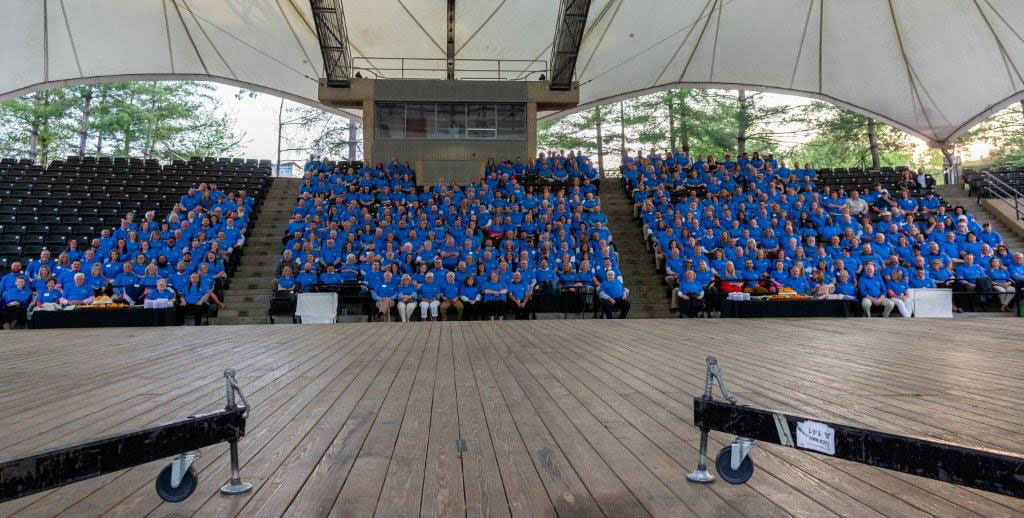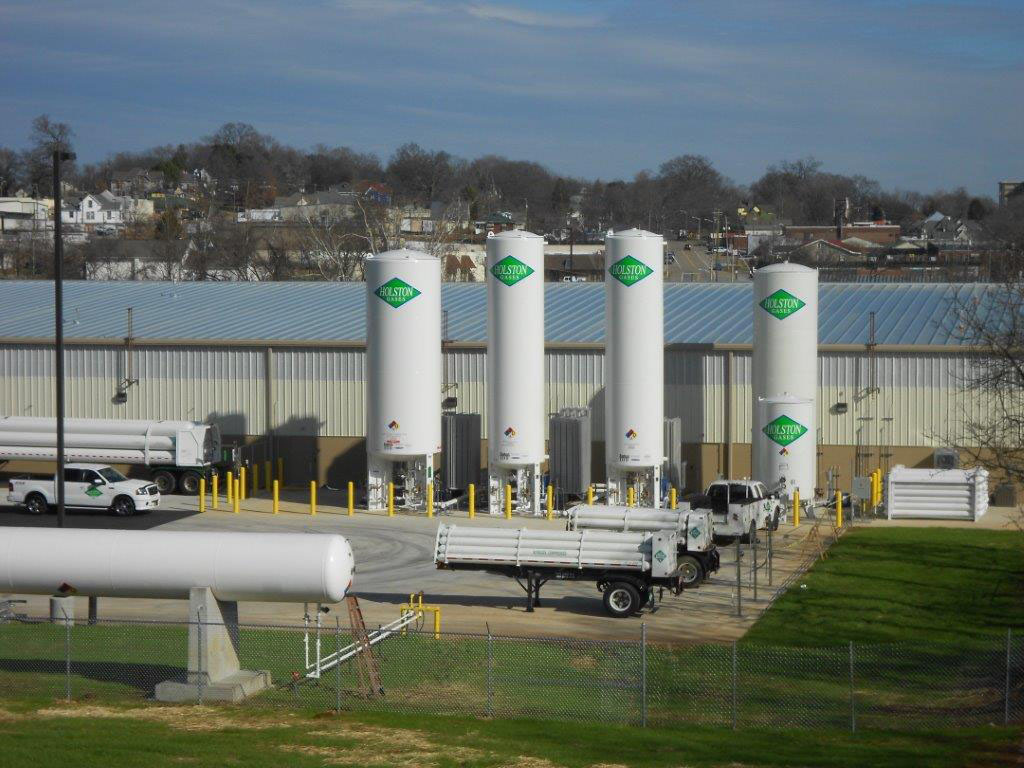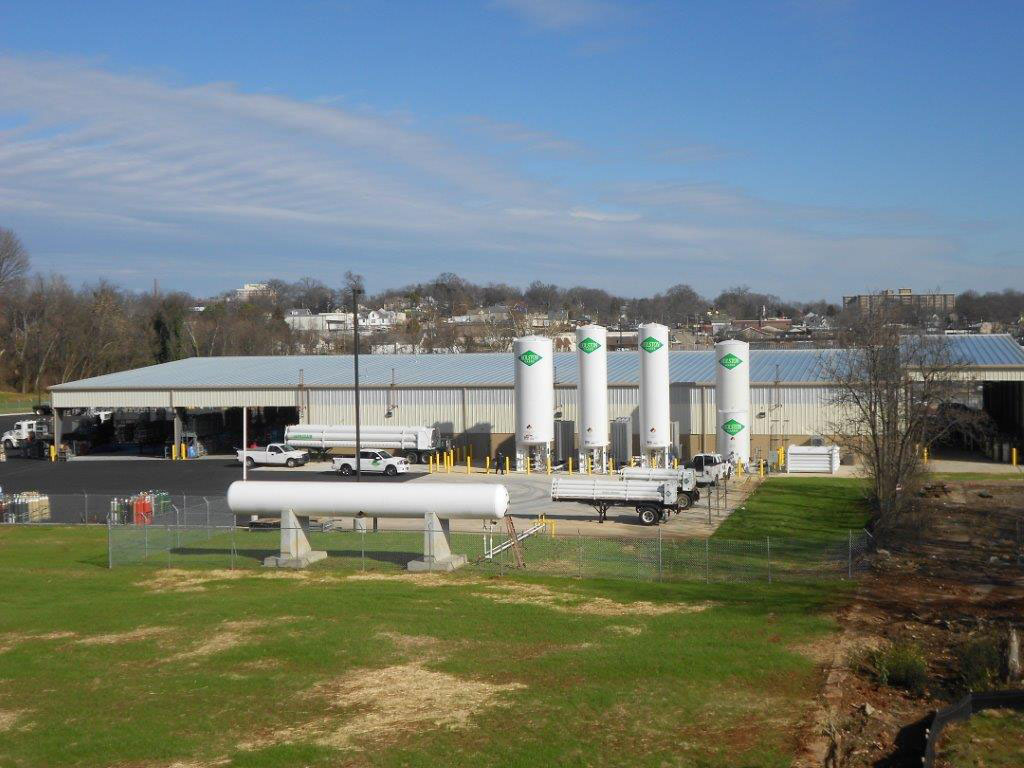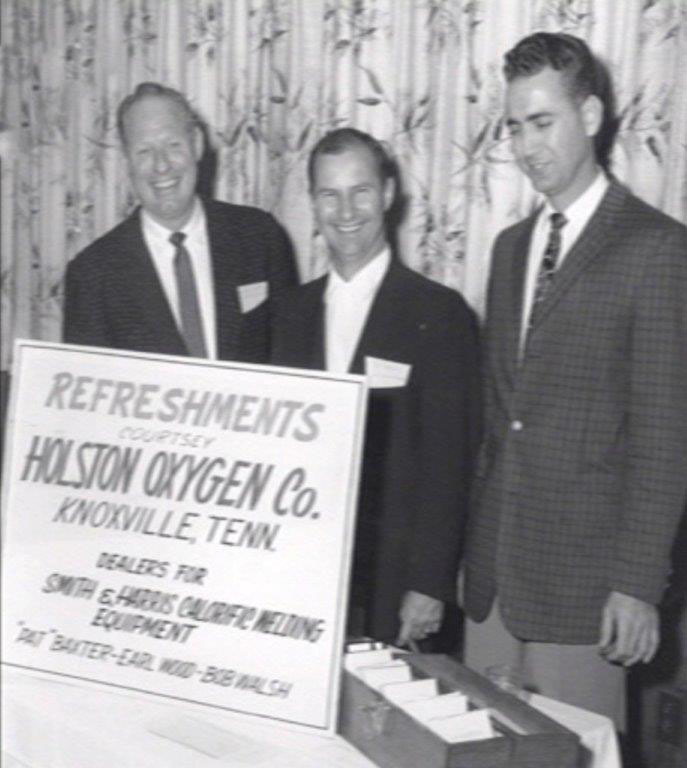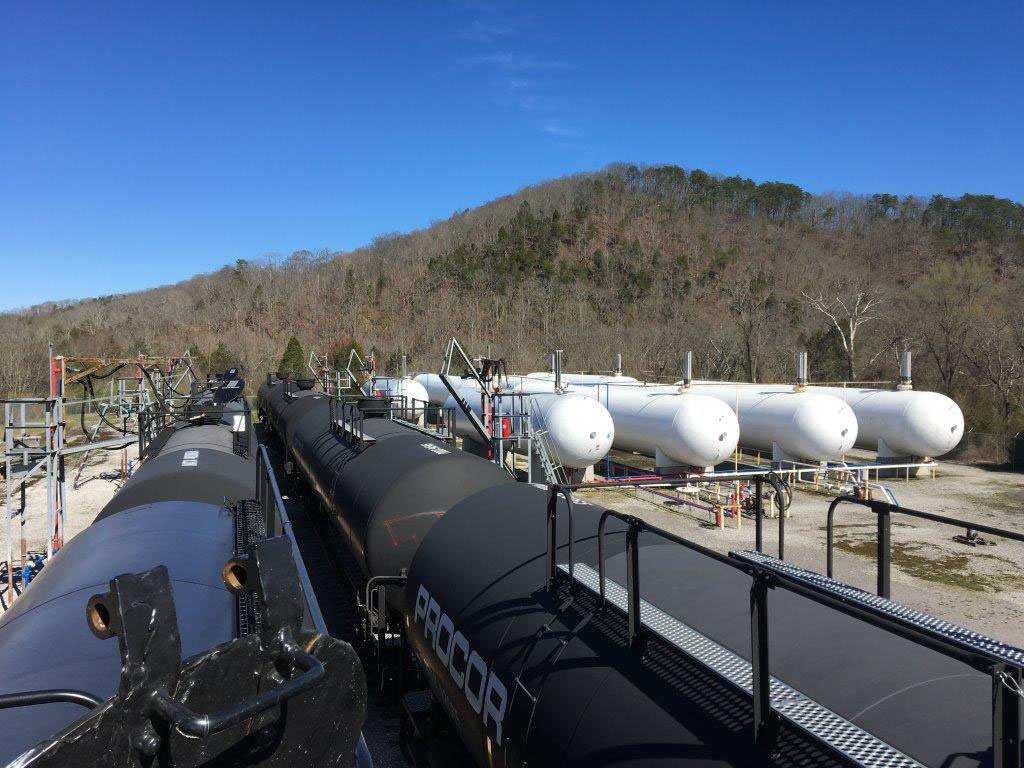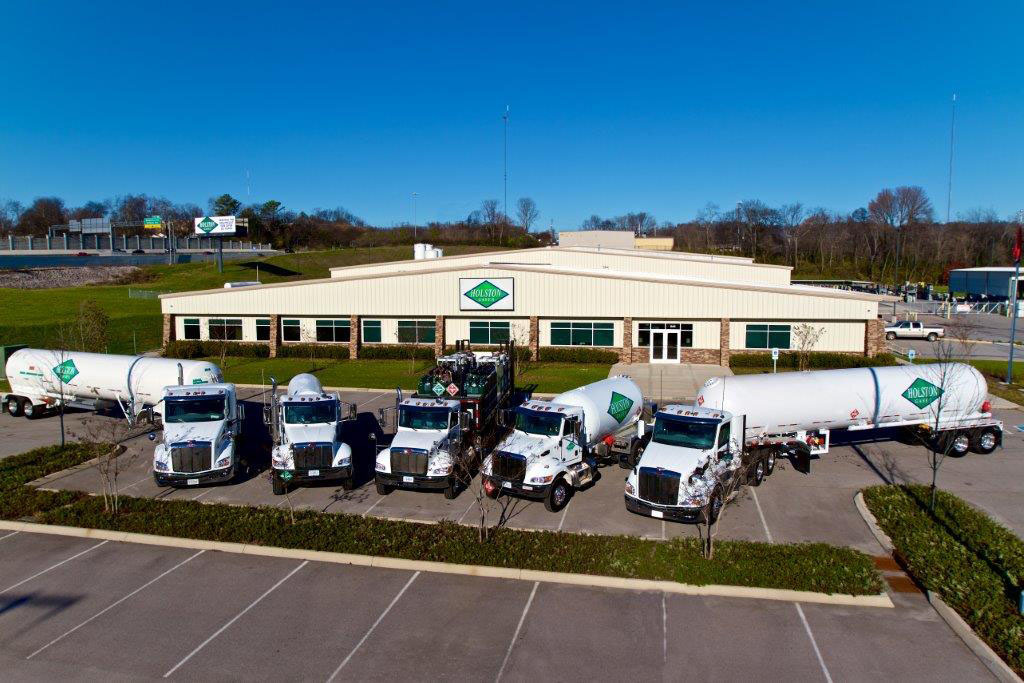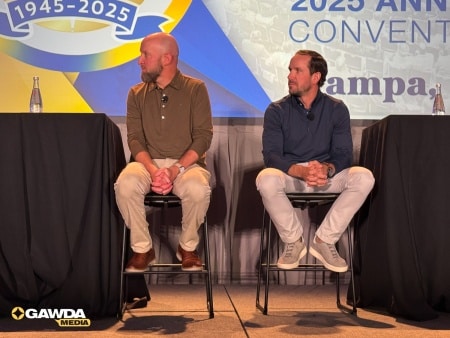Holston Gases, Inc. (Knoxville, Tennessee) was originally founded as the Holston Oxygen Company in 1958. Pat Baxter and Bob Walsh had worked together at National Cylinder Gas (NCG) and decided to strike out on their own to start the Holston Oxygen Company in Knoxville. Baxter and Walsh grew the business one account at a time, as customers were attracted to the personal attention and superior effort that the company made to satisfy their needs. In 1976, Baxter bought out Walsh’s interest in the company to become the sole-owner of Holston.
What had started as a two-man operation began to grow in earnest when Pat’s son, Bill Baxter, joined the company in 1981.
“Bill really didn’t have any intention to come into the business,” says Robert Anders, president/CEO of Holston Gases. “He had gotten his law degree and was practicing law in Knoxville when his dad said to him, ‘You need to come take a look at this. This might be something you want to do.’”
Bill decided to leave his law practice behind and join the company. However, he wasn’t gifted an executive position on a silver platter.
“He worked his way from the ground up,” says Anders. “Eventually he took over as president of Holston Gases. We’ve taken off since then under his leadership. We’ve grown from one store to 34 stores in six states, with a variety of products and a broad product line.”
Another watershed moment in Holston history was when Anders joined the company in 1990.
“I was working for BOC Gases,” Anders says. “They had just transferred me to Knoxville and I met Bill as a competitor. He was getting ready to go into expansion mode and he asked if I wanted to come help him do that. It was the best decision I ever made. I’m finishing up my 29th year with Holston and it has been an incredible run.”
Company Culture
Anders’ longevity is not an exception at Holston. It is the norm. The company has built an incredible company culture that entices employees to join the company and nurtures them and helps them grow in a way that makes them want to stay once they’ve joined.
“We have 400 employees now. If you talk to our employees, I think they would say that there is a genuine feeling of togetherness and that everybody is pulling in the same direction,” says Anders. “We celebrate our success throughout the entire company. Last year was our 60th anniversary and we celebrated by bringing everybody in the company to Knoxville and renting out a big amphitheater for a fantastic celebration. We brought back our retired employees as well. Our employees feel like they’re a part of the bigger picture.”
One of the core tenets at Holston Gases is the sense of ownership that permeates the entire organization, from Anders all the way through the drivers and floor workers.
“When you get highly-motivated, talented people, and you put handcuffs on them, it can be demoralizing,” says Anders. “I’ve seen people who have come to work at Holston Gases because they felt that they couldn’t get out and do their job properly at their previous employer. They felt like they couldn’t make decisions. And they want to work for a dynamic company that is moving quickly and is going to give them an answer to their questions right away.”
One of the ways that Holston has been successful in growing and cultivating a successful leadership structure is by focusing very heavily on its bench strength and making sure that employees understand what opportunities there are for growth within the company.
“We’re striving as much as possible to grow our own,” says Anders. “We’re identifying young people, early in their careers and approaching them and saying, ‘If you buy in and go through the process, there is a great career for you here.’ That’s one thing Bill and I take some of the greatest pride in right now is looking across the landscape of our company and seeing how many good, young, talented people we have in our company who have 10-15 years of experience already.”
He continues, “We get them early and get them to understand and buy into our culture. And they’ve got plenty of examples to look at of people who did their positions before and went on to have tremendous careers and are now getting to retirement age. We don’t have to paint a mental picture for them. We can point and say, ‘This could be you.’”
Entrepreneurial Management
In addition to its culture of internal growth and development, another area where Holston appeals to potential employees is through its decentralized management structure. Holston’s management team encourages each of its branch managers to run their location like an entrepreneur.
“We think that’s the heart of our success,” Anders says. “We are a very decentralized company in a time where it’s very vogue to be centralized. We believe that one of the things that has been very successful for us is our local presence.”
For Holston, the idea of a “local presence” goes deeper than simply having a store in town. It’s having a person who understands the local dynamics of the town and understands that a business run in their location might not run the same way as one two towns over.
“We do everything on a local level,” Anders says. “All AR is handled locally, which is extremely unusual. All distribution is handled locally. All sales and management are handled locally. We want our managers to have a holistic approach to that market and to their customers. We empower our branch managers to run their branch like it’s their own business, as a general manager. So we don’t make decisions about who is going to be a general manager lightly.”
Even the branch manager’s compensation is based directly off the financial statement of the branch.
“Branch managers have full P&L responsibility, fully burdened responsibility, and they’re compensated off of the results of the financial statement,” says Anders. “That changes the way you think about things. You don’t think about things strictly from a sales standpoint, although that’s the most important function that we do. You have to think about distribution costs, about labor costs. There’s not some corporate office who is absorbing those expenses.”
For Anders, it’s extremely important for the branch managers to think about things like an entrepreneur.
“They have got a tremendous amount of authority and influence in the market. They have to look at things like a business owner. Obviously we coach them and work with them and we’re there to support them and help them. But we’ve created a culture of ownership. We’re not here to micromanage them from up in an ivory tower,” Anders says.
One of the ways that Holston demonstrates that trust and sense of ownership within the company can be seen in its management structure. Unlike some larger distributors, Holston only has four regional vice presidents.
“It’s a very flat management structure,” Anders says. “It’s not a big hierarchy out there. Our regional VPs have a tremendous amount of authority to run their regions. And they, in turn, as warranted and deserved, drive that authority down into the branch level.”
Growth
To get from The Holston Oxygen Company, with two-employees, to today having 400 employees across six states, with 34 branches, each with a localized, entrepreneurial-spirited General Manager, required strategic thinking and a bold growth strategy.
“If you go back to 1958 when the company was founded, the predominant gases being sold were oxygen and acetylene,” Anders explains. “For us, one of our biggest decisions was getting into the propane business. We are one of the largest independent propane companies in the United States. And as we progressed into the 1960s, we realized that the name Holston Oxygen didn’t accurately represent who we were anymore.”
With that realization, the Holston Oxygen Company became Holston Gases, Inc. As the company continued to grow and evolve, it slowly added more services and began to sell to a more diverse market and client-base. When Bill Baxter joined the company in 1981, the company kicked its growth into overdrive.
“When Bill came into the company he looked at it and said, ‘We can start doing more. We can start expanding,’” Anders notes.
To date, the company has made 35 acquisitions in its history. Its first acquisition came in the 1980s in Morristown, Tennessee.
“We’ve made acquisitions big and small,” says Anders. “Once we made the first one, we just started looking strategically to see where it made sense. We knew we wanted to expand but we also wanted to stay regional. We wanted to be able to control it.”
Holston continued to expand beyond Knoxville and, eventually, beyond Tennessee altogether. Today, Holston has branches in Tennessee, Kentucky, Alabama, Georgia, South Carolina and North Carolina. It also serves customers in Virginia, Ohio and Indiana.
“We didn’t want to leapfrog two states over and start running an operation there. That wasn’t for us,” Anders says. “We wanted to make sure we could service our customers the way we always had. We wanted to grow in a strategic and manageable way, both financially and personnel-wise.”
Of course, evolving from The Holston Oxygen Company into Holston Gases, Inc. required more than an increase in the number of locations. It required an expansion of its supplier base. Today, Holston Gases is a full-line welding supply company that also carries safety and welding supplies. The company carries all welding and industrial gases, medical, specialty and laboratory gases, beverage CO2, and propane gas, and is equipped to handle compressed cylinders, bulk facilities and liquid requirements. To serve all those markets, Holston has distribution agreements with more than 1,000 companies, ensuring that “if you need it, Holston can get it.”
The company’s featured vendors include: American Saw-Lennox, Bosch, Dewalt, ESAB, Hobart, Hypertherm, Lincoln Electric, Miller Electric, MCR Safety, United Abrasives, John Tillman Co, National Standard, 3M and Norton.
“If you’re going to be a full-line supplier, you need to have arrangements with an awful lot of companies. We’ve strategically looked and asked ourselves where do we want to be? What products do we want to commit ourselves to? If you sit with any good size independent, every one of them has a little bit of a niche out there that they’ve decided to go after in this business,” Anders says. “We’re really working hard on our beverage CO2 business, for example. We think that’s going to be very successful.”
To represent all of those suppliers requires strong relationships and good communication.
“It’s so important to consistently deal with your manufacturers in a very fair way,” Anders says. “The same way you do with your customers. If you create adversarial relationships with your suppliers, they’re not going to value your business. And that’s one of the things we try to do. We’ve tried to be fair to our suppliers and empathize with their stresses and pressures.”
He continues, “We understand that costs go up. That’s a reality for all of us. It’s more important to us that the supplier is going to come in here, train our folks and work with our people. That’s who we’re going to value a whole lot more than the person who says, ‘Well, I can give you 3% off of that product.’ That’s a reputation we’ve worked hard to uphold and I think it’s something that will bode well for us in the future.”
Going Forward
Over 60 years, Holston has seen tremendous growth and evolution. During that time, the company has lived by core tenets and philosophies that have guided that growth and informed that evolution. Going forward, Holston will continue to operate by those philosophies as it continues its growth.
“I’ve got a map in my office,” Anders says. “The first one I hung up was a 200-mile radius outside of Knoxville. Once we got beyond that, I got another map. This one is a 300-mile radius. We’re going to continue to expand into contiguous markets that make sense for us.”
However, as it has always done, Holston refuses to grow just to grow. It will evaluate each opportunity the same way it always has, and, if it is something that makes sense, it will act decisively.
“We’re not driven by size,” says Anders. “We’re not driven by number of branches. We want to continue to grow and we think there are some great opportunities out there for us. But you’ll never see Holston leap-frogging 300 miles and opening a new store.”
Today, the company has four central fill plants around the southeast that it considers its hubs to expand. The most recent one is located in Spartanburg, South Carolina.
“We try to open one new branch per region per year,” says Anders. “But if it doesn’t make sense, we don’t do it. Two years ago, we didn’t open a single one. This year we opened five. We’ve got a pretty good footprint right now and we just want to expand on it and fill in the gaps.”
From a personal perspective, Anders knows what at least his next four years hold. At the 2019 GAWDA Annual Convention, Anders was named “Mr. X” as the Second Vice President of GAWDA’s Board of Directors, in line to the presidency of the association.
“When I was approached to see if I was interested in joining the executive committee, I was initially unsure,” Anders admits. “It was my wife that ultimately helped make the decision. She said, ‘This isn’t about you. This is about your opportunity to give back to an industry that has been tremendous to you and your family.’ And that’s what I want to do. If I can help in some way during my tenure on the Executive Committee to help strengthen the organization and strengthen our industry, then I will feel blessed to be able to do that.”






